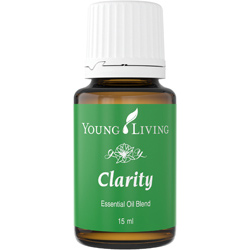How to improve memory
 There are proven methods to learn how to improve your memory.
There are proven methods to learn how to improve your memory.
What is MEMORY? Memories are stored in different places within the brain, depending upon what kind they are. There are three phases of memory – encoding, storage and recall. The ‘encoding’ phase of memory involves the taking in of information through our senses. The second phase is the ‘storage’ of that memory and preserving the information received. The third is ‘recall’, which is retrieving the stored information. Recall brings stored memories to the fore when we need it.
What Essential Oils Can I Use? – Rosemary, Lemon or Basil or you can buy a Young Living Blend called Clarity™ (I love) is a great blend to help with mental alertness and memory.
How Do I Use them? By diffusing, or apply with a carrier oil a few drops on to palms of hands rub together and inhale or apply couple of drops to soles of feet.
CUES AND ASSOCIATIONS
Associations and cues are signposts you can use to improve your memory. We are able to link cues and associations to a particular memory, and they then help us to recall it effectively. The more cues and signposts you have, the better the chance of retrieving the information required when you require it. For example, a color or image associated with a name may enhance your abilities to recall.
ARE YOU LOSING YOUR MEMORY?
If you feel that your memory is faltering or lapsing, you can pinpoint the area/s of memory that you feel are letting you down. Once you’ve worked this out you can use different techniques to help to improve your memory. For example, if you are unable recall someone’s name, you may have been inattentive when you were first introduced, and the name never made it into the ‘storage’ area of your brain properly. If you know the name but it won’t surface for you when you need it, your problem may have to do with ‘recall’.
Forgetting things is perfectly normal for all of us and we cannot be expected to remember absolutely everything all the time, so the mind and memory filters out anything we may find to be irrelevant. For example, we will often hold something in working memory at the time we are doing it, but it doesn’t fully make it into the ‘storage’ area. Sometimes, we are to forget past events and incidences so that we are able to retain new information.
COMMON MEMORY LAPSES
Many of our memory lapses happen when we do not pay enough attention. This can often happen when we forget people’s names who we’ve recently been introduced to.
Another form of common memory lapse may happen when we do familiar, automatic actions or do things by habit. For e.g, you may not remember whether you turned off the stove after cooking . Possibly due to this being something you automatically do without thinking about it at the time.
To improve this form of memory lapse, focus on what you are doing whilst you are doing it. Take a couple of seconds to bring your consciousness into the present moment and this could make all the difference to your memory recall.
Another way to help improve your memory when it comes to things you do on ‘automatic pilot’ is to get into the habit of pausing when you do something, like turning off the oven or iron. Stop and say to yourself, “I’ve just turned off the oven,” or “now I’ve turned off the iron.”
A sensory clue such as the sound of a click or switch of a button may also enhance recall.
REMEMBERING NAMES
The brain stores the vibration and sound of a person’s name in a different location to the information we have about them. This is why it is possible to recall who a person is, but entirely forget their name.
Repeating a name to yourself in your mind once you’ve been introduced can momentarily help but it does not necessarily ensure that it moves to more permanent ‘storage’. You may need to create a mental link or cue in order to instantly recall their name.
To help improve your ‘recall’ abilities and improve your memory, imagine the person’s name written across their forehead. Create a mental image of the name. Associate something to do with the name – a rhyme or descriptive word.
REMEMBERING HIDING PLACES
When we wish to hide valuables and important documents, we often look for the safest place. Generally, because we put thought and effort into deciding where that hiding place should be, you would expect that we would easily remember it. Sometimes though, our memory may draw a blank when trying to remember the safe hiding place we chose. Mentally and/or physically retracing your steps may sometimes help. Another method is to envision yourself holding the item that you hid, then picture yourself thinking of a place to hide it, as this often jogs the memory of where you hid the item in the first place.
EVERYDAY ITEMS
Remembering where you left your car keys or wallet need not be a problem. The most obvious solution to missing car keys (or your wallet) is to store them in the same place every day. You can make a special, permanent home for them such as a hook by the door, a bowl on a table, a top drawer, a handbag or briefcase … whatever suits you and your lifestyle.
If you are unable to find your umbrella, have a think about the last time it rained. This may give you a clue as to its whereabouts. M ake a point to keep it in a cupboard or other convenient ‘home’ so that you always know where it is.
Do you have trouble finding your car in the car park? If so, once you park your car, take a moment to look around and take note of any signposts or landmarks that are obvious. When shopping, make sure you leave the centre by the same door you entered as this can help jog your memory, coupled with the visual cue of your chosen landmark or signpost.
Do you sometimes not remember what you needed from the shops in the first place? If so, make a list. If you have trouble remembering to take the list with you when you go shopping, keep the list in your purse, wallet or handbag and add to it when needed – but keep it in the same place.
With a little extra thought, time, effort and practice we are able to encode, store and recall our memories with ease, helping to improve your memory.


 Clarity™ is a great blend to help with mental alertness and memory. Let’s take a look at some of the ingredients.
Clarity™ is a great blend to help with mental alertness and memory. Let’s take a look at some of the ingredients.
Basil according to research has been found beneficial for alleviating mental fatigue and encouraging concentration. Cardamom is a very uplifting and refreshing fragrance and therefore may be invigorating. Rosemary verbenon is energizing and helps reduce mental fatigue. Peppermint is soothing, cooling, and dilating to the system. According to research, just inhaling peppermint increased the mental accuracy of students tested by up to 28%. Rosewood is soothing to the skin, appeasing to the mind, relaxing to the body. Geranium helps with overall balance particularly with the hormonal system. Lemon is invigo rating, enhancing, and warming. Palmarosa is a great oil for the skin—balancing, soothing and stimulating new growth. Ylang ylang helps balance male-female energies and brings about feelings of self-love, confidence, joy and peace. Bergamot is soothing to the endocrine system and to the hormones. It may uplift and calm the emotions and help relieve anxiety, stress, and tension. Roman chamomile is detoxifying and calming. Jasmine is uplifting to the emotions. It may produce feelings of confidence, energy, euphoria, and optimism.
